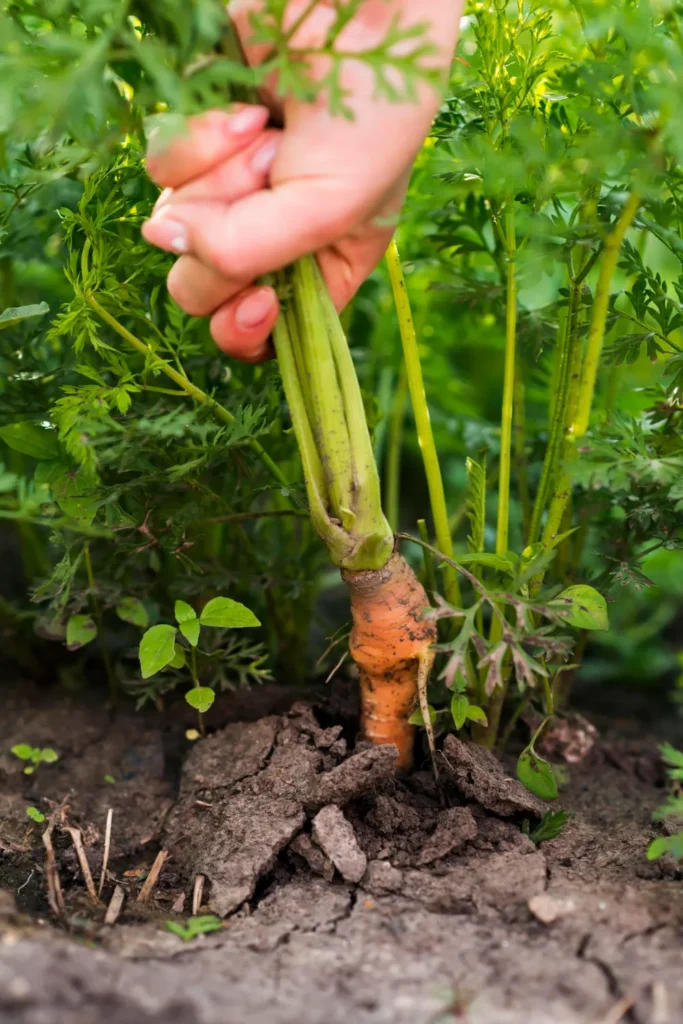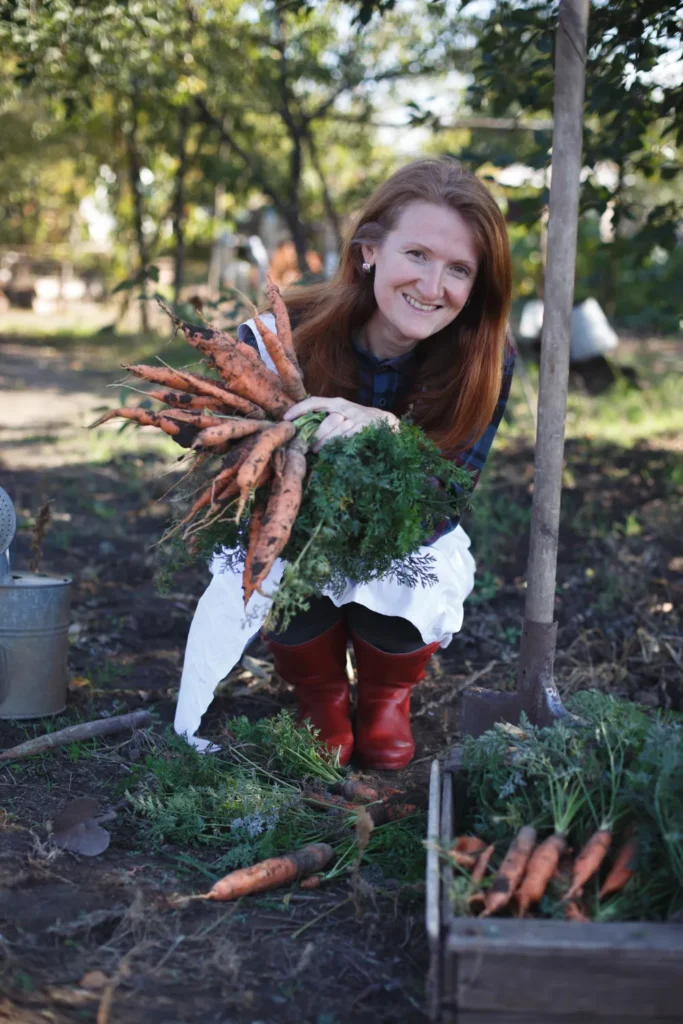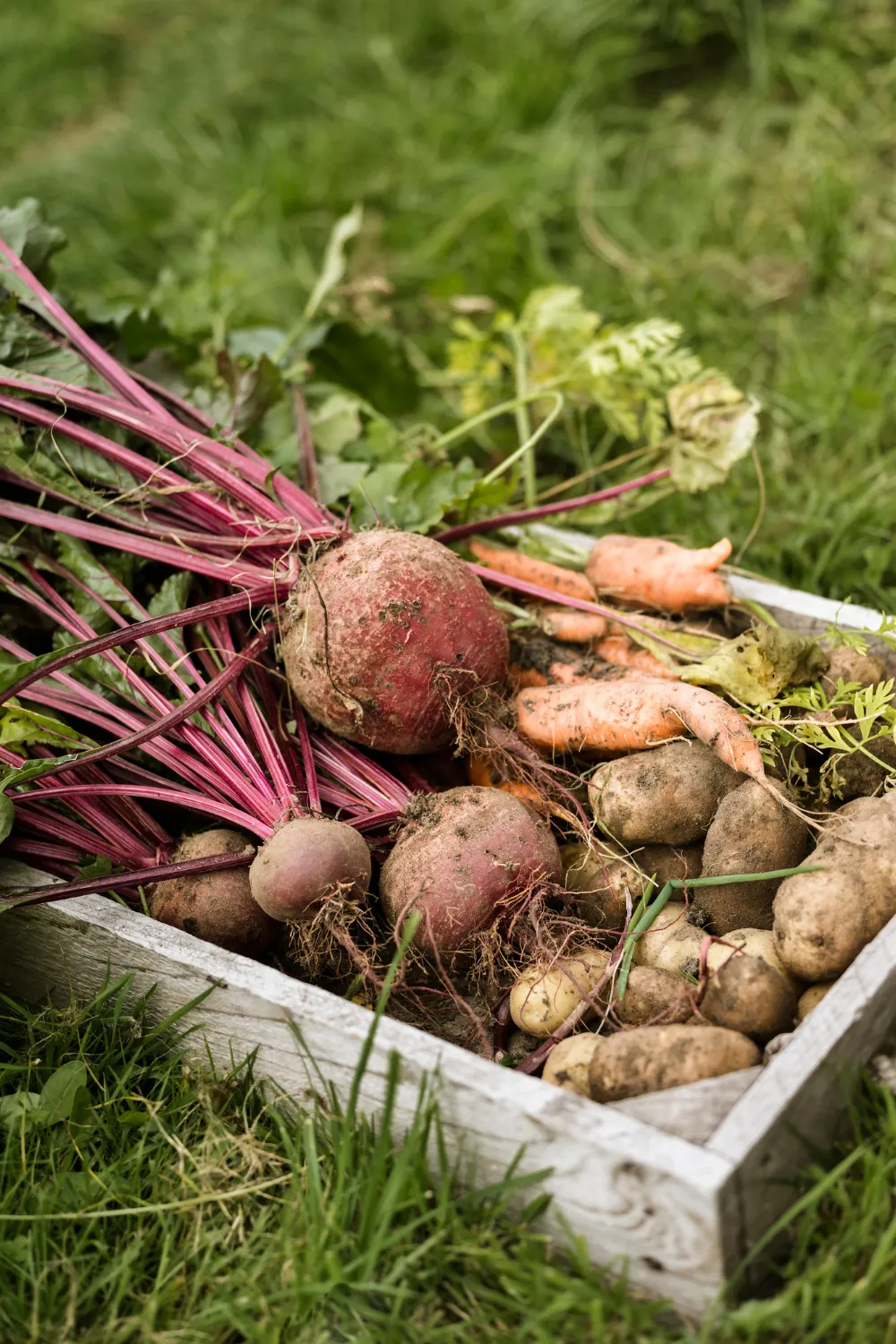Table of Contents
Introduction
Last autumn, I stared at my pathetic carrots – stunted, forked things that looked nothing like the seed packet promised. Sound familiar? After the third season of disappointing root harvests, I almost gave up entirely. The thing about growing vegetables underground is you can’t see what’s happening until harvest day, which makes the whole process feel like gardening with a blindfold. If you’ve ever pulled up deformed parsnips or bite-sized beets, you’re in the right place.
The Underground Reality of Root Vegetables
Most gardening books make growing root vegetables sound straightforward – plant seeds, water, harvest bounty. Yeah right! What they don’t tell you is how picky these underground treasures really are. After 15+ years of digging up both successes and failures, I’ve learned that root vegetables demand specific conditions that gardening manuals often gloss over.
In my Zone 6b garden, I’ve discovered that traditional planting dates are increasingly unreliable. Two years ago, an unusually warm February convinced me to plant early carrots – big mistake. The soil temperature fluctuations resulted in tough, woody roots hardly worth eating.
Breaking Down Root Vegetables by Type (Because They’re Not All Created Equal)
Carrots
After growing roughly twenty different carrot varieties, I’ve become convinced that soil structure trumps almost everything else. My sandy loam in eastern Pennsylvania grows beautiful ‘Napoli’ carrots, but when I tried the same seeds in my community garden plot with heavy clay, I harvested what looked like orange octopuses.
For carrots specifically:
- Skip the fertilizer. I’ve actually gotten sweeter carrots in poorer soil. The year I generously amended with chicken manure, my carrots grew enormous tops and pitiful, hairy roots.
- Those “pelleted” expensive seeds? Worth every penny if you have shaky hands like mine. I used to thin for hours; now I space properly from the start.
- Try growing in raised beds or fabric pots if your soil is heavy. My five-gallon grow bags produced the straightest carrots I’ve ever harvested.
Potatoes
Lemme tell you about the Great Potato Experiment of 2023. I planted the same ‘Yukon Gold’ seed potatoes in three different systems: traditional trench, container, and straw mulch. The trench method produced the highest yield, but the containers gave me the cleanest potatoes with zero scab issues.
What I’ve learned about potatoes:
- Cutting seed potatoes a day before planting helps prevent rot. My grandmother insisted this wasn’t necessary, but side-by-side tests in my garden proved otherwise.
- Forget the fancy potato bags unless you’re religious about watering. Mine dried out while I was on a three-day trip, and I harvested marble-sized potatoes.
- The “no dig” method using straw? Works amazingly in rainy Oregon (where my sister gardens) but was a disaster in my drier Pennsylvania garden. Regional adaptation is crucial!
Beets and Turnips
Here’s where I’ll contradict popular advice – beets absolutely benefit from thinning, despite what some no-waste gardeners claim. My unthinned rows produced sad, undersized roots while properly spaced plants gave me gorgeous storage beets.
For best results:
- Soak beet seeds overnight. I’ve had germination jump from about 60% to nearly 90% with this simple step.
- Don’t believe the “direct sow only” myth. I’ve successfully transplanted beet seedlings started indoors, giving me a 3-week jumpstart on spring harvest.
- Foliar feed with seaweed solution when plants have 3-4 true leaves. This boosted my ‘Chioggia’ beets dramatically, especially during last summer’s drought.
Step-by-Step: Preparing Soil That Root Vegetables Actually Love
Difficulty: Moderate (but worth the effort)
Materials:
- Garden fork (I use a Fiskars D-handle that’s survived 9 seasons)
- Compost (homemade or quality purchased – I’ve had terrible results with Miracle-Gro brand but great success with Coast of Maine)
- Coarse sand (optional for clay soils)
- Coffee grounds (free from local café)
- Garden rake
- Soil pH test kit (the liquid ones work better than strips in my experience)
Process:
- Test your soil pH – most root vegetables prefer 6.0-6.8. My naturally alkaline soil needed substantial amendment.
- Begin loosening soil to AT LEAST 12 inches deep. My first year, I only went 6 inches down and harvested finger-length carrots.
- Remove rocks larger than a marble – I filled a five-gallon bucket with stones from one 4×8 bed! Those rocks cause forking and stunting.
- For clay soil: Work in coarse sand and aged compost in equal parts. My heavy clay improved dramatically after two seasons of this treatment.
- For sandy soil: Add only compost – about 2 inches worked into the top 10 inches. The year I added sand to already sandy soil, I created concrete-like conditions during a rainy spell.
- Smooth the surface with the back of a rake, NOT the tines. This prevents compaction of that critical top layer.
- Pre-moisten soil before sowing tiny seeds like carrots and turnips. My biggest mistake for years was planting in dry soil and washing away seeds while watering afterward.
Common mistake: Working soil when it’s too wet. I ruined an entire bed of beautiful tilth by getting impatient after spring rains. Test by squeezing a handful – it should crumble, not form a mud ball.

Seasonal & Regional Root Vegetable Considerations
Living in USDA Zone 6b, I’ve noticed our spring warm-up comes almost two weeks earlier than it did when I started gardening. This means I can now reliably plant early roots like radishes and turnips in late March rather than mid-April.
For southern gardeners, focus on heat-tolerant varieties. My cousin in Georgia grows amazing ‘Cylindra’ beets as a fall crop, while they perform terribly in her spring garden.
Northern friends should leverage season extension. My gardening buddy in Zone 4 uses simple low tunnels to harvest carrots into December – something I hadn’t thought possible until I saw her setup.
Regional pest adaptations are crucial too. In my garden, wireworms destroyed nearly 40% of my potato harvest until I started using nematodes as a biological control. This works in my humid climate but might not be effective in arid regions.
Personal Garden Experiences & Strong Opinions
In spring 2022, I was convinced by a gardening podcast to try growing potatoes vertically in a wire cage. What a disaster! The plants grew beautifully tall, but when I eagerly dismantled the cage in September, I found just a handful of tiny tubers at the very bottom. All that effort feeding the continuously rising soil level produced lush foliage but practically no food. My wife still teases me about the “potato skyscraper” experiment.
I have to say, I strongly disagree with the current trend of planting root vegetables in shallow raised beds. The Instagram-worthy garden boxes look pretty, but six inches of soil simply isn’t enough for decent carrots or parsnips. My neighbor’s gorgeous cedar raised beds produce roots about half the size of my less attractive but deeper growing areas.
Also controversial: I’ve completely abandoned growing certain traditional root crops. After five years of pathetic rutabaga harvests, I’ve accepted that my climate and soil conditions just aren’t suitable. Sometimes the best gardening wisdom is knowing what NOT to grow. I’ve replaced them with more productive celeriac, which thrives in my garden’s conditions.

Essential Root Vegetable Gardening Tools & Equipment
DeWit Forged Hand Fork ★★★★
I’ve used this hand fork for over seven years, and it’s still as sturdy as day one. This is definitely an investment piece at around $40, but the quality is apparent from the first use. Unlike two cheaper versions that bent when I hit stones, this one handles my rocky soil without complaint.
The comfort-grip handle saved my wrists during last fall’s massive potato harvest (42 pounds from a 4×8 bed!). One drawback: it’s heavier than other hand tools, which might be an issue if you have arthritis or hand strength concerns. Perfect for harvesting root vegetables without damaging them.
Hori Hori Garden Knife ★★★★★
This has been my constant gardening companion for five seasons now. At around $25-30 for a good one, it’s a budget-friendly investment that replaces multiple tools. I use mine primarily for harvesting root crops and dividing perennial vegetables like rhubarb.
The serrated edge cuts through dense soil around deep carrots without damaging them – something regular trowels always seemed to do. I’ve even used the depth markings on the blade to ensure proper seed planting depth. The carbon steel blade needs occasional oiling to prevent rust, but that minor maintenance is worth the performance.
Root Vegetable Storage Bags ★★★½
After losing too many harvested carrots and beets to either dehydration or mold, I finally invested in proper breathable storage bags two years ago. These natural cotton bags (about $15 for a set of 5) maintain the perfect humidity level when stored in my cool basement.
Last winter, my carrots stayed crisp for over three months – a huge improvement over the six weeks I’d get with plastic bag storage. They work best for mid-size harvests; for larger amounts, I still prefer sand storage boxes. The bags do need washing between uses as they can retain soil and potentially harbor fungus spores.
Soil Blocker Set ★★★★
After years of struggling with direct-sowing small root vegetable seeds, I switched to soil blocking for early starts of beets and turnips. This $30 tool creates perfect little soil cubes that transplant without disturbing developing roots.
I particularly love using these for consistent spacing of slower-germinating varieties like parsnips. The initial learning curve was steep – it took several attempts to get the soil mixture just right for the blocks to hold together. Worth mentioning: you’ll need a special seedling soil mix, as regular potting soil doesn’t work well with blockers.
Quality doesn’t have to mean quantity when it comes to gardening tools. These four items have genuinely improved my root vegetable gardening experience, but I’m still using the same basic rake and shovel I started with 15 years ago. Invest where it matters most for your specific growing conditions.
Root Vegetable FAQs
Q1: Why do my carrots always fork and split? A1: In my garden, the biggest culprit was hidden rocks. After sifting through my raised beds and removing anything larger than a marble, my forking problem decreased by about 80%. The remaining issues were usually caused by erratic watering – when my drip irrigation system broke last summer, the two weeks of hand-watering resulted in split roots from inconsistent moisture. For clay soils, adding coarse sand (not play sand) can dramatically improve carrot shape.
Q2: When should I harvest potatoes in the Pacific Northwest? A2: I gardened in Washington state for three years, and the biggest difference I noticed was timing the harvest around rainfall patterns. Unlike my current Pennsylvania garden, where I wait until vines die back completely, in the PNW I’d harvest early main-crop potatoes as soon as the flowers faded. Waiting longer often led to rot issues in the typically wet fall conditions. For maritime PNW gardens, I’d recommend focusing on earlier varieties like ‘Red Norland’ rather than late-season types.
Q3: Is it worth growing specialty root vegetables like scorzonera or salsify? A3: After trying both, I’d say it depends entirely on your available space and patience. These crops need a full season (or more) to develop, taking up valuable garden real estate. The flavor is unique and delicious, but the yield is relatively small compared to other roots. In my garden, salsify was the more reliable producer, with scorzonera frequently developing woody cores. If you’re curious, start with a small patch – I dedicated just one 2×4 section to experimenting with these before deciding if they deserved more space.
Conclusion
After years of soil under my fingernails and countless root vegetable harvests ranging from disappointing to abundant, I’ve learned that success underground requires observation, adaptation, and a willingness to break conventional rules. Every garden tells its own story through the roots it produces.
This spring, I encourage you to rethink your root vegetable strategy. Start with perfect soil preparation, choose varieties known to perform in your specific region, and be merciless about proper spacing. Your autumn self will thank you when harvest time comes.
Happy digging!
